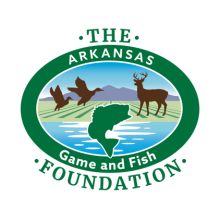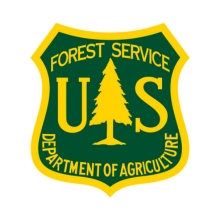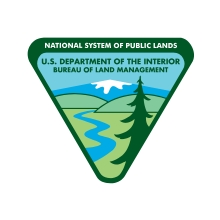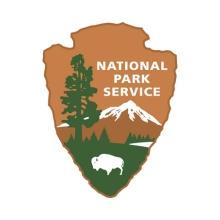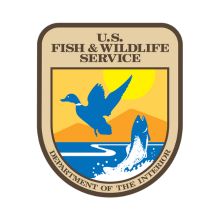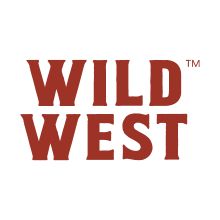- Home
- About
- Training & Events
- 2027 Symposium
- Resources
- For Members
2022 RMS Award WinnersSteve (TBerry) Young, Outstanding Contribution to River Management Award
As the District Ranger for the Canyonlands National Park River District, TBerry has provided exceptional leadership throughout the southeastern corner of Utah for the past 22 years as an employee with the National Park Service (NPS). He has shaped the river program responsible for protecting the Green and Colorado Rivers through Stillwater, Meander and Cataract Canyons. TBerry supports and mentors the park’s river rangers as well as all National Park Service employees in the Southeast Utah Group of parks: Arches and Canyonlands National Parks, Natural Bridges and Hovenweep National Monuments. This includes providing essential training and guidance on river operations and needs such as boat operations and swift water rescue. Each year his program partners with American Conservation Experience, Student Conservation Association and other intern programs to mentor and develop future river stewards instilling conservation techniques and sharing passion for all aspects of river management. Every year, TBerry and his team complete a myriad of river projects including removal and chemical treatment of non-native invasive vegetation (including use of his personally fabricated innovative tripod tamarisk stump puller), revegetation and associated irrigation projects and cultural and archeological site monitoring and protection, campsite/trail/boat ramp maintenance, river launch education programs, law enforcement operations, high water safety operations and permit compliance checks among other projects. He works across all the park’s divisions including the Law Enforcement, Interpretation, Education, and Visitor Services Division and provides annual educational river trips for park employees. He works closely with the park’s commercial concession operators, organizing bi-annual river trips to promote and support collaborative relationships and river stewardship. He is a primary leader for the park’s search and rescue program, acting as the Incident Commander for large, often lifesaving incidents throughout the parks. He fills the role of Incident Commander for other emergency operations including wildland fire and law enforcement. He has a unique personality which focuses on the value of the resource. He consistently aims to educate visitors and improve their understanding while crafting his messaging so that everyone can relate to and understand the message(s). TBerry’s influence and leadership extends beyond the river program, supporting protection of the entire, connected park and surrounding lands. He also leads patrols of other areas of the park, often heading up efforts to repair damaged areas and park facilities. His efforts to protect the uplands directly affect the riparian canyons and river corridor by reducing erosion, the spread of nonnative invasive plants and protecting a relic genetically intact herd of bighorn sheep from interaction with wild burros. If left to wander freely, the wild burros would find their way to the river and create irreparable damage. TBerry continues to advance the field of river management through science, education, interpretation, research and law enforcement and he does so with diligence and a unique style. Drawing from his work as a guide prior to joining the NPS, he uses his awareness of commercial and private whitewater operations to develop effective, fair evaluation practices and strategies for working with river guides. He is excellent at relating to commercial operators; listening to responses to management practices and needs. Each year he represents the National Park Service at the Utah Guide and Outfitters annual meeting to ensure he is listening and working with the guiding community. Over the past few years, he has supported and worked closely with the Returning Rapids Project), providing valuable insight from his many years on and familiarity with the Colorado River. He has assisted with numerous other science-based projects in the park and works closely with the park’s Special Use Permit program to manage activities in support of preserving park resources and visitor experiences. TBerry leads the river Law Enforcement operation with the stated goal of “solving problems before they need enforcement action.” Rather than simply write tickets to violators in the field, TBerry and his staff focus the program on early communication with river users to prevent violations before they cause resource damage. He updates permit information and provides a boater information packet for each river permit prior to their launch. TBerry built the staffing in the river district to allow River Rangers to check-in the majority of river users at the ramp. This has approach has significantly reduced resource damage and led to a more cooperative relationship with the boating community. TBerry is innovative and embraces the challenge of adaptive river management. TBerry has led the way in developing and maintaining a river management framework based off an outdated river management plan, 1979, that does not adequately address the dynamic current and future visitor use. This has required him to rely on his extensive knowledge of river users and park resources, working with an interdisciplinary team, and relying on adaptive management efforts. A prime example is his development of specific stipulations for pack raft users in the Cataract Canyon corridor to ensure the NPS goals of safety and resource protection while also recognizing the uniqueness of the user group. He modified the permit structure and regulations to embrace the new type of use TBerry’s influence, leadership and partnership extends beyond the National Park Service as evidenced by his well establish relationship with the Bureau of Land Management (BLM), the State of Utah, State Parks and Forestry Fire and State Lands Sovereign Lands Program as well as the United States Forest Service and Grand and San Juan Counties. Each year there is an interagency river managers meeting to discuss policies, regulations, new management issues and challenges. TBerry is a highly valued member who contributes greatly and is always seeking solutions.) TBerry is an outstanding advocate for professional river management and clearly shares his vision with visitors, river guides, concessionaires, interns, volunteers, fellow employees, interagency partners, and elected representatives. Joe O’Neill, River Manager of the Year
Joe has been a devoted and crucial asset to the Bureau of Land Management’s Cottonwood Field Office and the management of the Lower Salmon River for over 16 years. His success in leading the recent improvement and completion of seven new Bureau of Land Management boat ramps along the Wild and Scenic-eligible Lower Salmon River was one of the reasons he was selected for this award. Joe manages the last 112 miles of the Salmon River, which consists of 60 miles of eligible recreational designation and 52 miles of eligible scenic designation. This section of river has 4 different permitted commercial sections, consisting of over 55 commercial and/or non-profit outfitters. Those outfitters offer all types of experiences for their customers from float boating, power boating, jet boating, fishing, hunting, day-use and overnight trips. This section of river is also partially regulated by a self-issue permit, making this a popular river for the private recreational boater and angler as well. Over 35,000 people boated the Lower Salmon River in 2021 and over 100,000 recreationists visited the area making Joe’s work very important to the impact river access has on users’ experiences. Joe was the project lead for the Lower Salmon River boat ramp construction project and was very involved in every component from start to finish. The project consisted of improving all seven of BLM’s managed boat ramps (Shorts Bar, Old Lucile, Lucile, Slate Creek, White Bird Gravel Pit, Hammer Creek, Pine Bar) by extending and/or widening them (for some ramps it was both) to improve boater experience at the river access sites. Prior to the project, Joe secured over $1 million in funding to ensure that the completion of all 7 boat ramps were finished within a short timeframe. The first ramp at Pine Bar Recreation Site began in December of 2019 and the final ramp of the project at White Bird Gravel Pit Recreation Site finished in February 2022. Joe assisted the engineers in the designing, planning, and, when necessary, making modifications to those plans and designs. He helped the contracting officer issue contracts to the selected contractors and he helped facilitate the on-site walk-through meetings. The project involved 3 separate contracts awarded between 2019 and 2022. During the construction phase, Joe was on site almost every day for each ramp acting as the contracting officer representative for the engineers. He ensured plans were followed by checking the materials, processes and making any modifications as needed. A partner in the project included Idaho County Waterways which contributed around $80K for the Pine Bar ramp while the rest of the funding for the ramps came from BLM allocated recreation funds, deferred maintenance, and recreation fees. Joe’s planning and execution ensured that this project went smoothly and was key in its success. After some outfitters used the new boat ramps, they referred to them as “…world class facilities...” which attests to the leadership and direction Joe gave during the entire process of this project. Joe’s dedication to managing, enhancing and, maintaining the Salmon River, recreation sites, and facilities for all visitors will leave a priceless legacy for generations to come. The BLM, commercial permit holders, and those who recreate on the Lower Salmon River are very fortunate to have such a passionate and competent person as the river manager. Bob Ratcliffe, Frank Church Wild and Scenic Rivers Award
Bob builds relationships; his leadership, innovative ideas, and tireless efforts have elevated Wild and Scenic Rivers nationally. Bob formalized and strengthened Wild and Scenic Rivers within the National Park Service. Although the agency established the program and Steering Committee in 2008, prior to Bob's tenure, he led staff to develop a Director's Order (DO) that consolidated National Park Service responsibilities for Wild and Scenic Rivers in one place. Bob ably navigated the administrative beast of the agency; and DO #46 was signed in May 2015, just in time for him to set a new goal to have the accompanying Reference Manual (RM) completed in time for the Act’s 50th Anniversary. The draft was completed in time and awaited signature. Bob persisted through administration changes and roadblocks; expanded, improved, and finally shepherded this significant guidance document for leadership signature in June 2021. It would not have happened without Bob's leadership. DO#46 and RM#46 are essential to the continuing support of Wild and Scenic Rivers. Bob has been highly successful in fostering collaboration with constituents, coalitions, partners, and agency leadership to emphasize rivers, recreation, and community assistance as top priorities for the agency. He helped guide development of America the Beautiful, America’s Great Outdoors initiative, and strategic priorities for youth engagement and economic benefits of recreation, including on wild and scenic rivers. He spent much of the last three decades developing new and progressive national policies and improving best practices sustainably managing increased visitation and emerging recreation activities. He is a strong advocate for river access, watershed protection, national designations, and connecting young people to the outdoors. Over the last few years, Bob has been a fierce advocate for the Anti-Discrimination and Sexual Harassment (A-DASH Collaborative) Training with the goal to cultivate equity, inclusion, support and trust on and off the river. He provided early support and funding for this essential work to ensure everyone can safely enjoy rivers. His attitude is infectious and energizes those around him. He’s trained leaders, peers, and mentored many young people into river management, inspiring the next generation. Bob is enthusiastic and tireless in recruiting, developing, and investing in upcoming natural resource professionals and has created a legacy of individuals who are now involved in managing Wild and Scenic Rivers including non-agency river advocates and a cadre of agency staff. His direct work for rivers is impressive, but so too is the community of professionals he has helped foster. Bob built partnerships with other agencies, universities, nonprofits, and the public to help protect rivers. He has a direct personal connection to wild rivers that keeps him curious and inspired and open minded. Bob helped inspire the formation of the Wild and Scenic Rivers Coalition, because he makes partnering with the agencies seem not just possible but productive and enjoyable. Bob has demonstrated his dedication to public service and furthering the missions of all agencies charged with protecting and managing our Wild and Scenic Rivers throughout his career. He is a leader among leaders. He makes things happen without concern toward his own position, but to do the right thing, to get important efforts off the ground, and follow through. In Bob’s own words, “Rivers are the best way to experience what the park system has to offer. Rivers are magical. You are literally immersed in an environment that you can’t get to unless you float through it. I’ve seen people have really transformative experiences on the river.” |

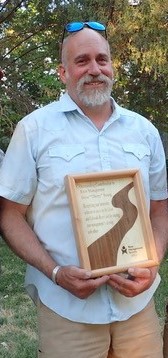 A group of 40 people gathered at Old City Park in Moab, Utah on Saturday July 9, 2022. Despite the 106-degree heat, the group had an ‘interagency get together’ potluck meal, complete with ice cream. Employees from the Bureau of Land Management, National Park Service, Forest Service and Grand County Search and Rescue attended in addition to family, friends and retirees. Steve TBerry Young received the 2022 Outstanding Contribution to River Management Award from the River Management Society presented by Jennifer Jones. TBerry was recognized for his innovative approach to management challenges on the Green and Colorado Rivers in southeastern Utah.
A group of 40 people gathered at Old City Park in Moab, Utah on Saturday July 9, 2022. Despite the 106-degree heat, the group had an ‘interagency get together’ potluck meal, complete with ice cream. Employees from the Bureau of Land Management, National Park Service, Forest Service and Grand County Search and Rescue attended in addition to family, friends and retirees. Steve TBerry Young received the 2022 Outstanding Contribution to River Management Award from the River Management Society presented by Jennifer Jones. TBerry was recognized for his innovative approach to management challenges on the Green and Colorado Rivers in southeastern Utah.
